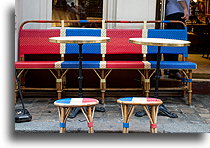


Why visit Paris? If you want to pick one city in Europe, Paris is the one. The architectural wealth of Paris is unquestioned. From the Gothic Sainte-Chapelle to the glass Pei pyramid surrounded by the Louvre Palace, and modern Centre Pompidou. If you think fashion, if you think perfume, you mean Paris. This is a city of coffee shops. Parisian cafés are rows of tiny, round tables facing outward. People sit there and watch others. It is city of artists, the most romantic city in the world. For me, Paris is the capital of Europe.



The Paris we visit today is a relatively modern city. Between 1853 and 1870, the French Emperor Napoleon III, nephew of Napoleon Bonaparte, commissioned a massive public renovation program for the city. He wanted not only to modernize the French capital, but also to solve the problems of overcrowding, disease, and crime in the city. His goal was to prevent future social unrest. In order to improve the quality of life, overcrowded and unhealthy medieval and dangerous districts of the city were demolished. One of the worst was called la Petite Pologne (little Poland), where the Parisian police rarely ventured at night. In their place were built new buildings, squares, parks, and wide avenues. New water and sewage systems were also built. A new train station and central market were built, and a new opera house was built. The Louvre gained vast museum spaces. Even the Cathedral of Notre-Dame underwent significant renovation of its original Gothic features, which had been altered over the centuries.



Growing Paris population problems demanded affordable housing. The buildings were multi-story, and the differences in wealth reflected in the floors on which the tenants lived, not the city district. Poorer tenants occupied the cheapest rooms on the top floors, the wealthy had large apartments on the second floor, and the middle class usually occupied the intermediate floors. Wealthier Parisians wanted to climb as few stairs as possible to reach their apartments. The poorest tenants did not have living rooms in their apartments, but the building usually had a large, well-appointed space that was shared by all






